This is the Rolex Daytona Ref 16520. But you can call it the Zenith Daytona. Everyone else does. It’s an awesome watch. And one that is pretty well-known in watch-collecting circles. That’s because it marks a major milestone in the history of the Rolex Daytona. That of the first self-winding Daytona reference. Having made its debut at the end of the 1980s, it doesn’t yet qualify for the status of “vintage” watch. One of the reasons why it offers such great value for the patient collector with long-term vision. So, if you want to add one to your collection, or are curious why it’s called the Zenith Daytona, keep on reading.
A (Very) Brief History Of The Zenith Daytona
Let’s cut to the chase. The Rolex Zenith Daytona take its nickname from the fact that it’s powered by a Zenith El Primero calibre. Albeit a heavily-modified one – which we will discuss in more detail shortly.
If you find it hard to imagine Rolex making a watch equipped with an external movement you’re not alone. That’s because these days, the Crown manufactures everything in-house. And we do mean everything. This wasn’t always the case though. In fact, it wasn’t that long ago that Rolex still relied on 3rd-party suppliers for certain things. Particularly movements, which it then modified in-house.
IN THE SHOP: check out this pre-owned Rolex Zenith Daytona Ref 16520 A-Series available now.
The Zenith Daytona Ref 16520 is a prime example of this. Rolex debuted the Cosmograph Daytona line back in 1963, with the Ref 6239. And for the next 25 years, these watches were all fitted with manual-winding movements. Also, from a third-party supplier. The Valjoux calibre 72 chronograph movement, which Rolex customised. It got the name Calibre 72 B. And then later Calibre 722. Before the upgraded Calibre 727 took its place around 1970.
Towards the mid to late 1980’s though, there was a clear trend towards self-winding watches. The thing is, creating a self-winding chronograph movement from scratch is no easy feat. In fact, it’s one of the most intricate complications in watchmaking. Which also means it’s very time consuming and very expensive. Particularly if you’re not sure what the response from the market will be like.
Rolex needed a solution and it came in the form of the Zenith El Primero Calibre 400. Considered the best self-winding chronograph movement available on the market. Making it the clear choice for Rolex, who only worked with the best.
So, How Zenith Is The Zenith Daytona?
Not very is the simple answer.
You see, Rolex didn’t do a straight transplant of the El Primero calibre into the Daytona and call it a day. Far from it. Instead extensive modifications were undertaken to align the new movement with Rolex’s requirements. Estimates put it at around 200 changes in total. With the resulting movement retaining a mere 50% of the Zenith caliber 400’s parts. These changes focused on increasing reliability and minimising the need for maintenance.
The El Primero’s hi-beat rate of 36,000 vibrations per hour came down to the industry standard 28,800. This meant the movement would need less frequent servicing. It also meant an increase in the power reserve of 4 hours. Rolex then fitted a new escapement. It featured a larger, freely sprung balance and balance spring with Breguet overcoil. A more costly option and one that it is harder to set. But one that results in improved accuracy. To keep the clean aesthetic of the Daytona dial, the date function came out altogether.
- The Rolex Calibre 4030 – image courtesy of Urdelar
Rolex also applied a better finish to its version. A testament to the brand’s commitment to quality given that no one would see it behind the solid caseback. This included perlage, polishing, and graining. It even swapped in its distinctive rotor weight reversing wheels in red.
This evolved movement went by the name Calibre 4030. It became the forerunner to first self-winding chronograph movement produced in-house by Rolex. The mighty Calibre 4130 that still powers today’s modern ceramic Daytonas.
The self-winding movement was one of several changes introduced on the Zenith Daytona. And whilst the others aren’t as important, they did play a major role in shaping the modern Daytona as we know it. Stoking the watch’s popularity in the process.
The ‘New’ Rolex Daytona
Alongside the self-winding movement, Rolex debuted several aesthetic updates on the Zenith Daytona. Most significant was the increase in case size. Whilst previous models had been on the smaller side at 37mm, the new Ref 16520 was a more masculine 40mm. Bringing the Daytona in-line with the other tool watches in the Rolex line-up. Such as the Submariner. And the GMT-Master.
The dials also changed. Previous versions came with either matte black or metallic silver dials. On the Zenith Daytona, the dials were now lacquered and glossy. They also featured applied metal hour markers inlaid with luminous material. And the sub-dials had a thin outer track of an opposing color, each ringed with a metallic edge. Protecting this new dial was a sapphire crystal, used for the first time on a Rolex Daytona.
IN THE SHOP: check out this pre-owned Rolex Zenith Daytona Ref 16520 A-Series available now.
These changes, subtle as they were, were transformative for the Rolex Daytona. The previous references had become a little dated for modern tastes. The manual-wound movements were cumbersome. And the cases were too small for the status-driven 80s. This translated into poor sales for Rolex. Hard to imagine today but it’s true.
Coinciding with an already buoyant market, the response from collectors was immediate. As with the release of the ceramic Daytona in 2016, a frenzy ensued. The limited availability of the Zenith-base calibre only added fuel to the fire. Everyone wanted a Zenith Daytona. But even if Rolex wanted to make more, it couldn’t.
As a result, dealers began stockpiling every example they could get their hands on. Driving up the prices on the secondary market to as much as double recommended retail in the process. Much like what would happen with the Rolex Pepsi and Rolex Batman some 20 years later.
How Many Versions Of The Zenith Daytona Are There?
Over its 12-year production life, Rolex made several variations of the Zenith Daytona. The main references are:
- Ref 16520 (steel);
- Ref 16523 (steel and yellow gold);
- Ref 16528 (yellow gold);
- Ref 16518 (yellow gold on a leather strap); and,
- Ref 16519 (white gold on a leather strap).
Within these references, Rolex also produced various jewel versions. These feature bezels or dials set with diamonds and other precious stones. Like this Zenith Daytona Ref 16528 with Serti Dial.
IN THE SHOP: check out this pre-owned Rolex Zenith Daytona Ref 16528 Serti Dial available now.
There is also a very special version of the Zenith Daytona coveted by collectors for its rarity. It’s often referred to as the Chairman Daytona as it was a gift for top Rolex directors. At least according to Rolex lore.
This is a special version of the yellow gold Ref 16528, produced in a limited series of only 10 pieces in 1991. It features a galvanised blue dial with soleil details, and a bezel graduated to 400 units per hour. Very desirable. Almost impossible to find.
- A Rolex Zenith Daytona Ref 16528 Chairman – image courtesy of Phillips.
Key Dial Variations
As is always the case, Rolex made subtle tweaks to the Zenith Daytona over its lifetime. Most of these concern the finishing or the text on the dial. In total, experts agree there are five distinct ‘Marks’ or versions of the dial. There are also some subtle changes between the tachymeter bezels used. (200 units per hour in the first series. 400 units per hour thereafter.) Here are a few of the key dial variations to look out for.
The Floating Porcelain Dial
The first series of the Zenith Daytona was the R-series. It features the Mark I dial, which, along with the Mark II dial, was the creation of Singer. A top third-party dial-maker, renowned for their artistic approach to dial design. These would be the last dials Singer would design for the Daytona collection.
- A Porcelain dial with floating ‘Cosmograph’ – image courtesy of Blackbird
The R-series, and some early L-series examples, are characterised by a floating dial. This mean the word “Cosmograph” sits apart from the text above it. As if it’s ‘floating’ by itself. Even more desirable are the white dial versions. Nicknamed ‘porcelain’ dials due to their polished finish. These dials share the qualities of porcelain and enamel dials but are actually lacquer. The text sits on top in layered coatings, giving it a certain thickness relative to the dial. This is most prominent when viewed from the side.
The 4-Liner Dial
Even rarer than the floating dial is the 4-Liner dial. So named because there are only 4 lines of text below 12 o’clock. The “Officially Certified” designation is absent. This dial is only found on a very short-run of L-series Zenith Daytona models, from 1989 – 1990. The watch also features a Mark II bezel, with a scale for 400 units, with 250 and 225 indications. The “units per hour” has been relocated to 1 o’clock.
- A Rolex Zenith Daytona with rare 4-Liner Dial – image courtesy of Amsterdam Vintage Watches
The Inverted 6 Dial
As the name suggests, the ‘6’ at bottom of the hour counter is upside down. Making it look like a ‘9’. This is found on dials from 1990 to early 1993. (E-series to S-series, although there seem to be some L-series models with inverted 6 dials too. As you can see in the watch above.) Also known as the Mark III dials. A bit confusing I’m sure you’ll agree, which is why Rolex corrected it on the Mark IV dial.
The Patrizzi Dial
Another variation that collectors love is the Patrizzi dial. So named after the man credited with its discovery; legendary Italian auctioneer, Osvaldo Patrizzi. This is generally agreed to be the Mark IV dial, which appeared on Zenith Daytona models from 1993 to 1998. And is yet another example of a rare Rolex mistake adding a huge premium to the value of the watch later in life.
So, what exactly is a Patrizzi dial?
- Rolex Zenith Daytona Ref 16520 with Patrizzi dial – image courtesy of Rare Birds.
Well, for a start, it is only found on the black dial version of the Ref 16520 Zenith Daytona. And is characterised by chronograph counters that have turned brown. This discoloration is due to the use of an organic varnish called Zapon. On some dials, it seems the varnish did not provide the right level of protection. As a result, the silver outer tracks on the iconic sub dials have oxidized over time. Turning a tropical brown color as they react with UV rays.
What makes these dials extra special though is the fact that this process is ongoing. As well as non-systematic. That means the color changes over time, and never stops changing. Meaning each imperfect dial is unique. And when you put the words ‘Rolex’ and ‘unique’ in the same sentence, well… Suffice to say, these models are definitely a fan favourite.
Price and Availability
Prices for the Zenith Daytona vary depending on condition and specific reference. As well as production series. Later models tend to be more sought after. For example, the A-series and P-series are often more expensive. This is due to them being the final two series produced before Rolex launched its in-house movement. And the Zenith Daytona ceased production. Likewise, you can expect a hefty premium for any of the rare dials discussed above.
IN THE SHOP: check out this pre-owned Rolex Zenith Daytona Ref 16520 A-Series available now.
As a broad guide, expect to pay between US$25,000 – US$35,000. A higher price should coincide with a better-quality example. And as always, don’t just buy the watch. Buy the seller too.
Is It Collectible?
The Zenith Daytona occupies a rare space. Right now, the focus is still on vintage, manual-wound Daytonas. As a result, already high prices for those models are continuing to rise. Fuelled in part by the Paul Newman Daytona mania. The irony though, is that it was the introduction of the Zenith Daytona that started that craze.
When Rolex debuted the 16500 series in 1988, it stopped making manual-wind Daytonas. And we all know what happens when brands like Rolex and Patek end production on certain models. Look at what happened with the 5960A. Or the Ref 116710LN. And they weren’t even what you would call ‘popular’ watches. Prices go one way. Up.
IN THE SHOP: check out this pre-owned Rolex Zenith Daytona Ref 16520 A-Series available now.
But the Zenith Daytona is still a young watch. Relatively speaking. It doesn’t qualify for vintage status yet. And won’t for another few decades. Meaning prices are still reasonable. It’s easy to imagine one coming up for auction in 20 years though and attracting major attention. This was a significant watch for Rolex. A turning point that launched the upward trajectory of the modern Daytona. And it did it with somebody else’s movement! Well, 50% of somebody else’s movement at least.
In my books, that makes it collectible. And the fact that it’s also a great looking watch you can wear and enjoy every day? Well, that’s a major bonus.
IN THE SHOP: check out this pre-owned Rolex Zenith Daytona Ref 16520 A-Series available now.
Technical Specifications: Rolex Zenith Daytona Ref 16520
- Case: Oyster – 40 mm – Oystersteel – monobloc middle case, screw-down case back, pushers and winding crown – fixed steel bezel with tachymeter scale – waterproof to 100 metres / 330 feet.
- Dial: White or black, with contrast sub-dials – 18ct gold hour markers – luminescent hour markers and hands.
- Movement: Calibre 4030 – Zenith El Primero Calibre 400 base – self-winding- sprung Glucydur balance wheel and balance spring with Breguet overcoil – 54-hour power reserve – Centre hour, minute and chronograph seconds – column-wheel chronograph with horizontal clutch – Stop-seconds for precise time setting – COSC-certified chronometer.
- Price: Discontinued / ~USD25,000 – USD35,000 on secondary market.
This article by TheWatchLounge has been sponsored by our partner WatchBox.
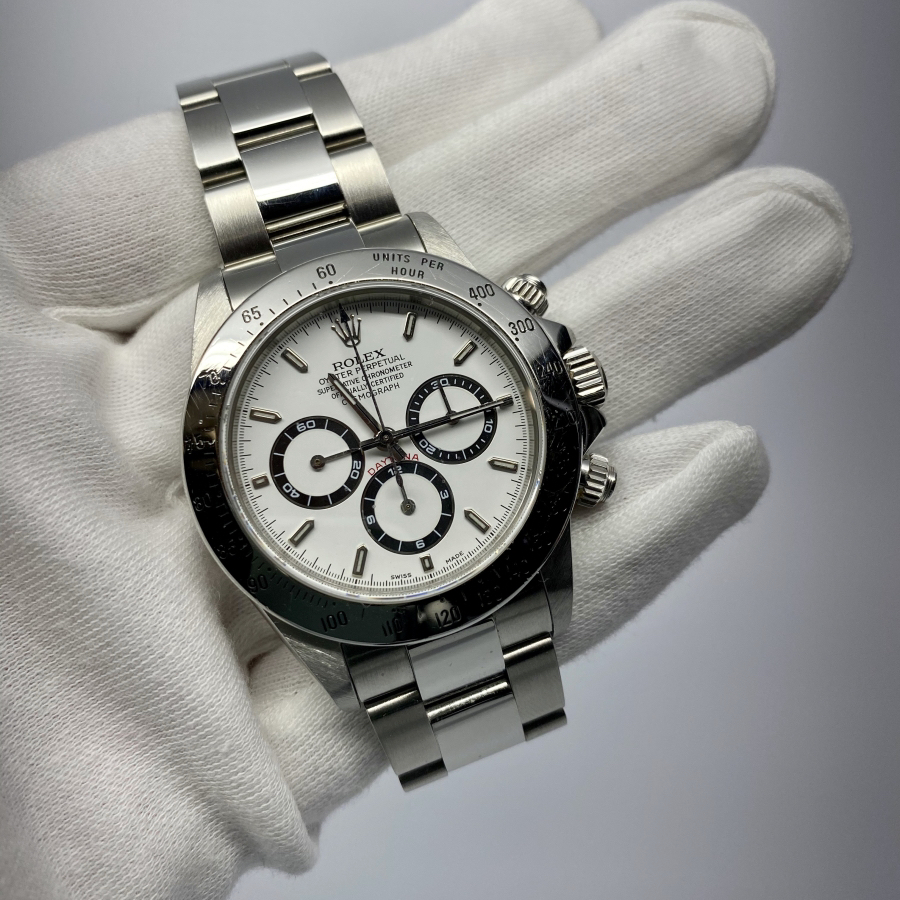
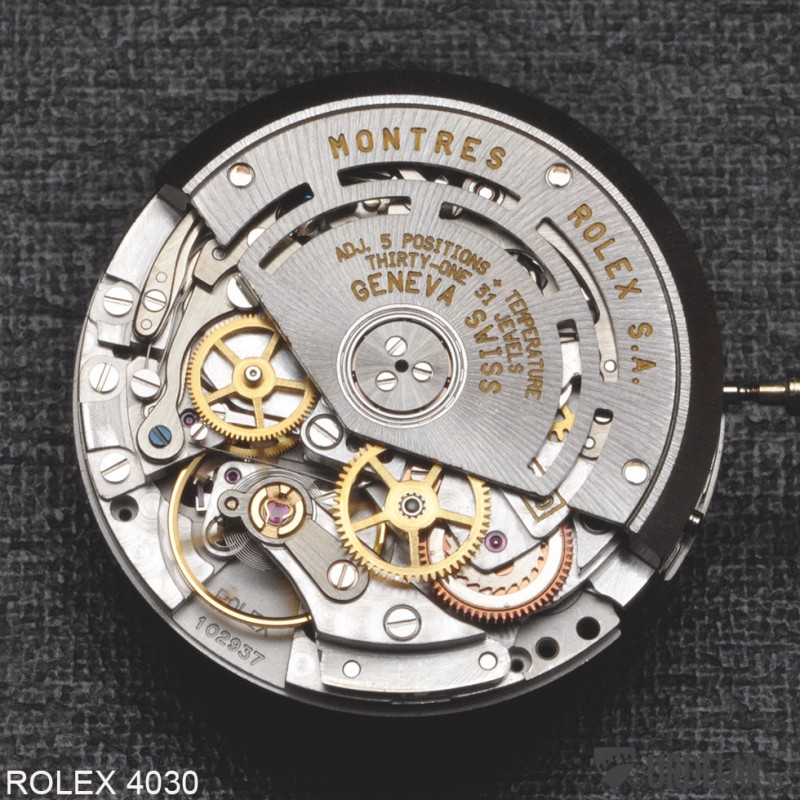
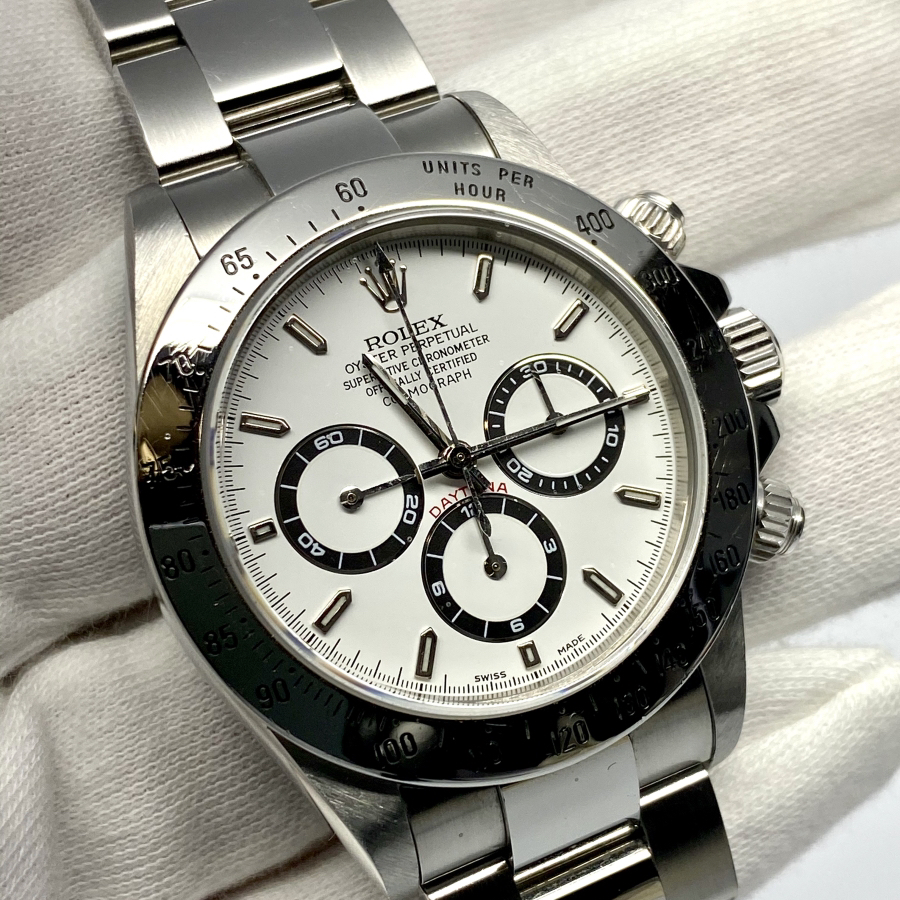
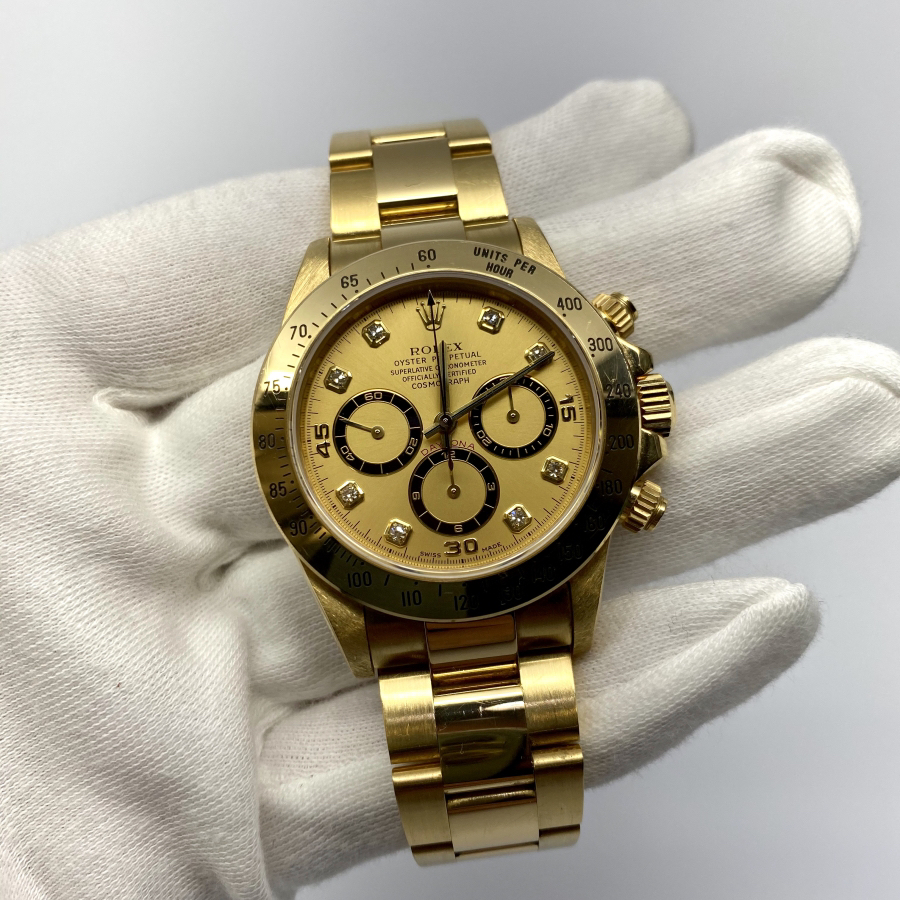
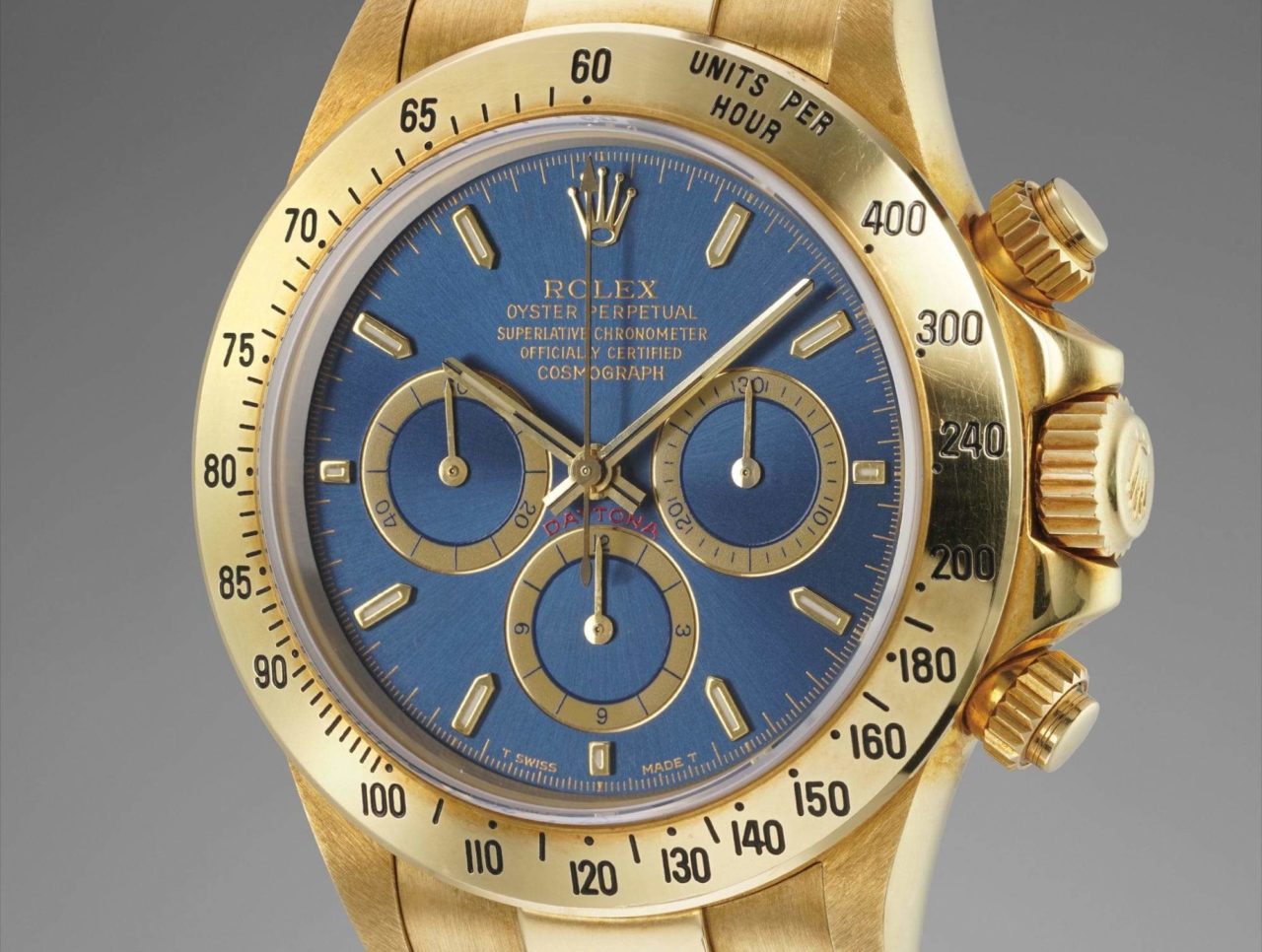
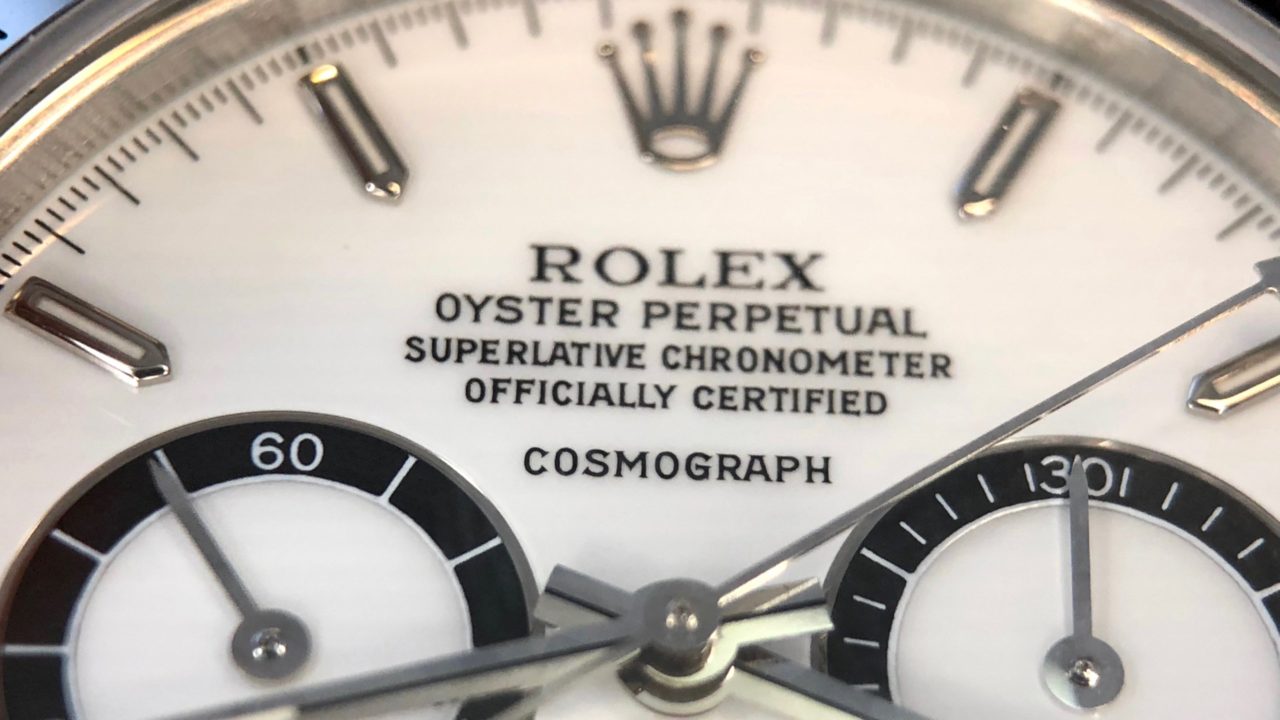
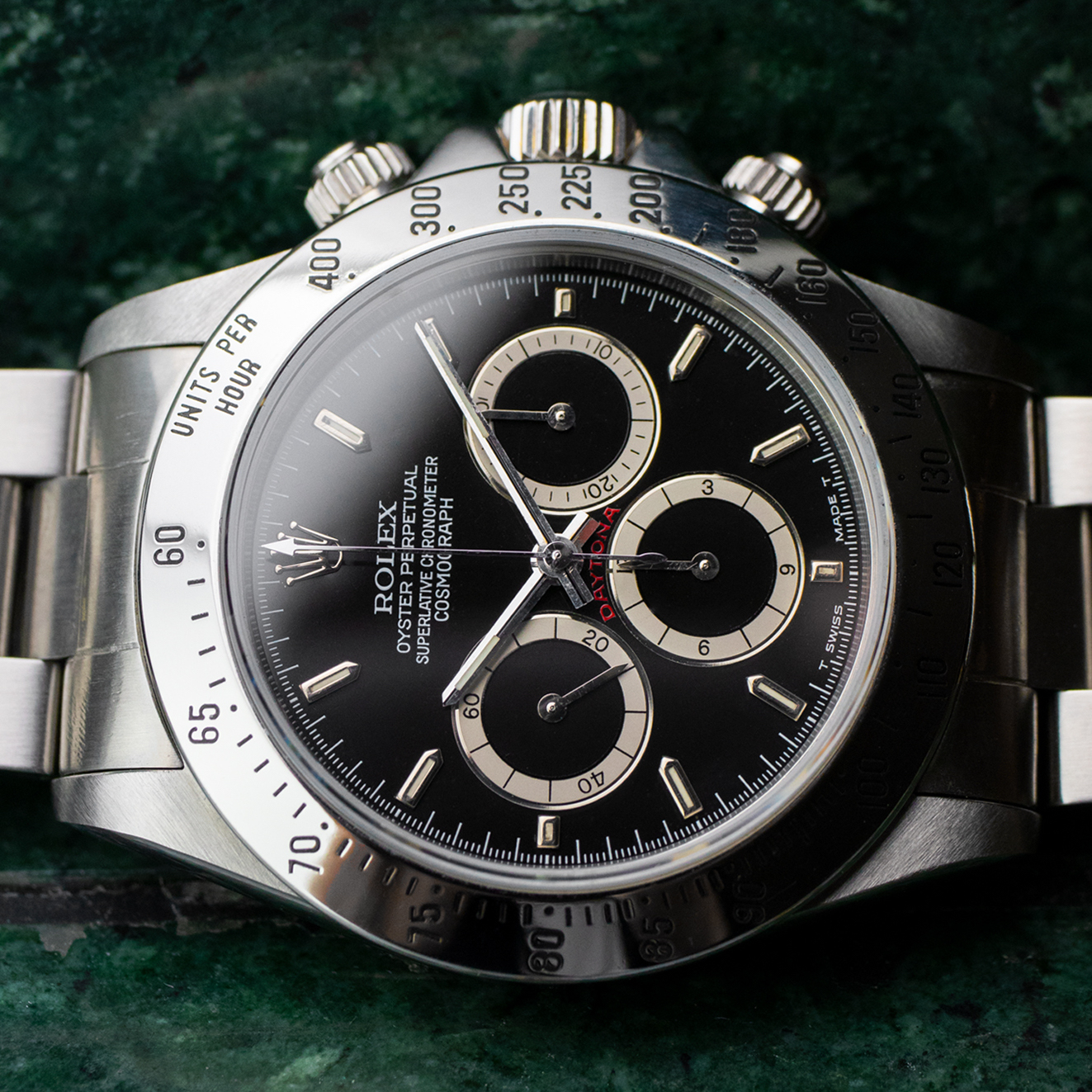
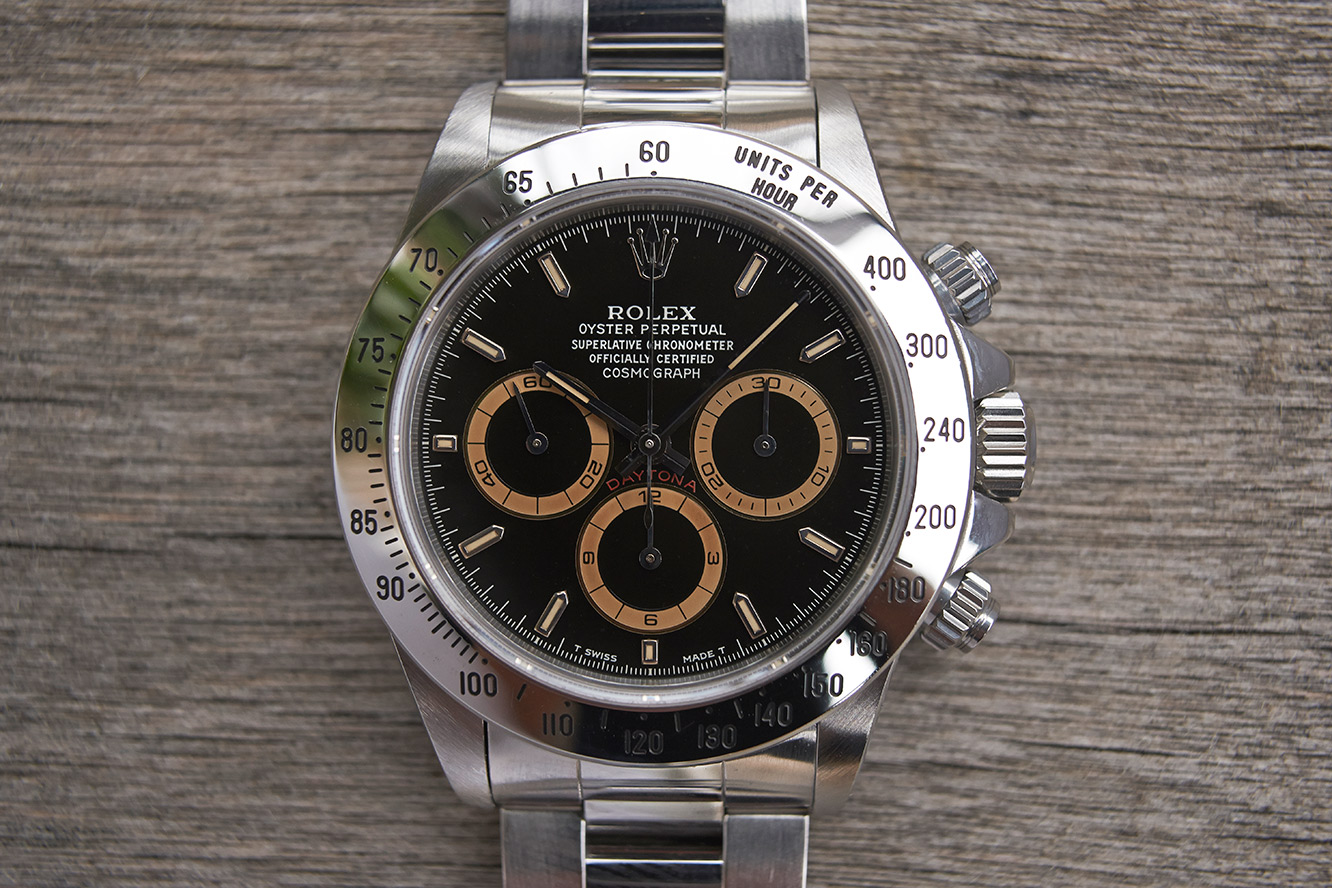
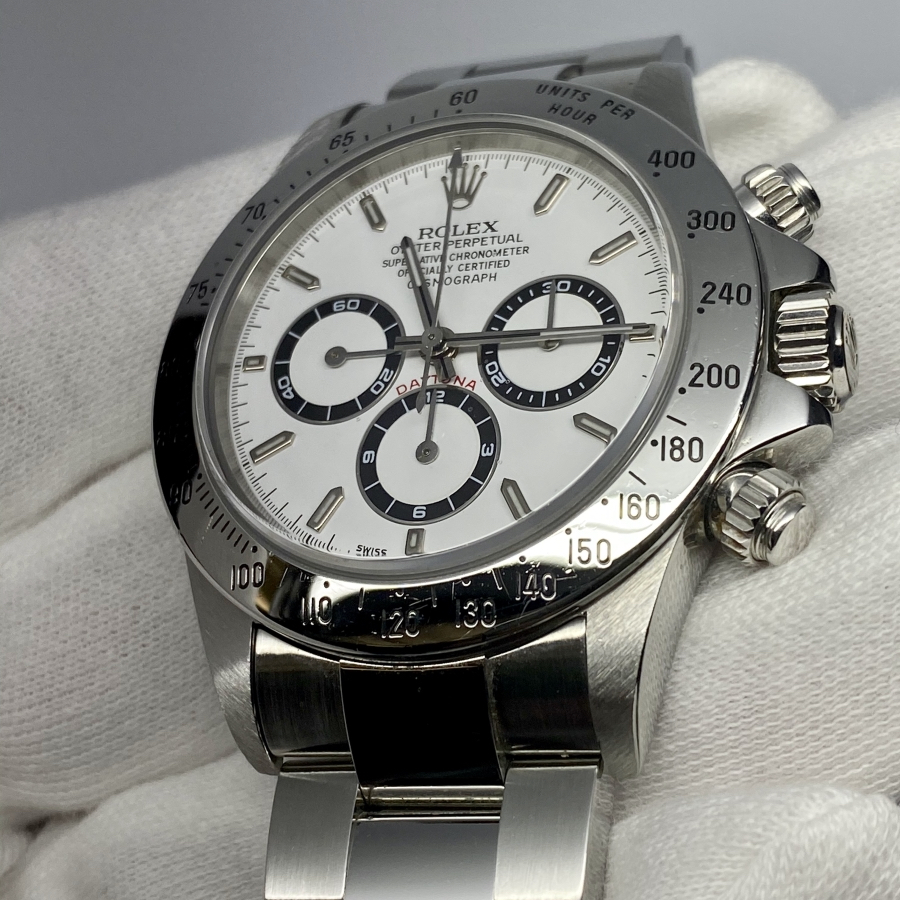
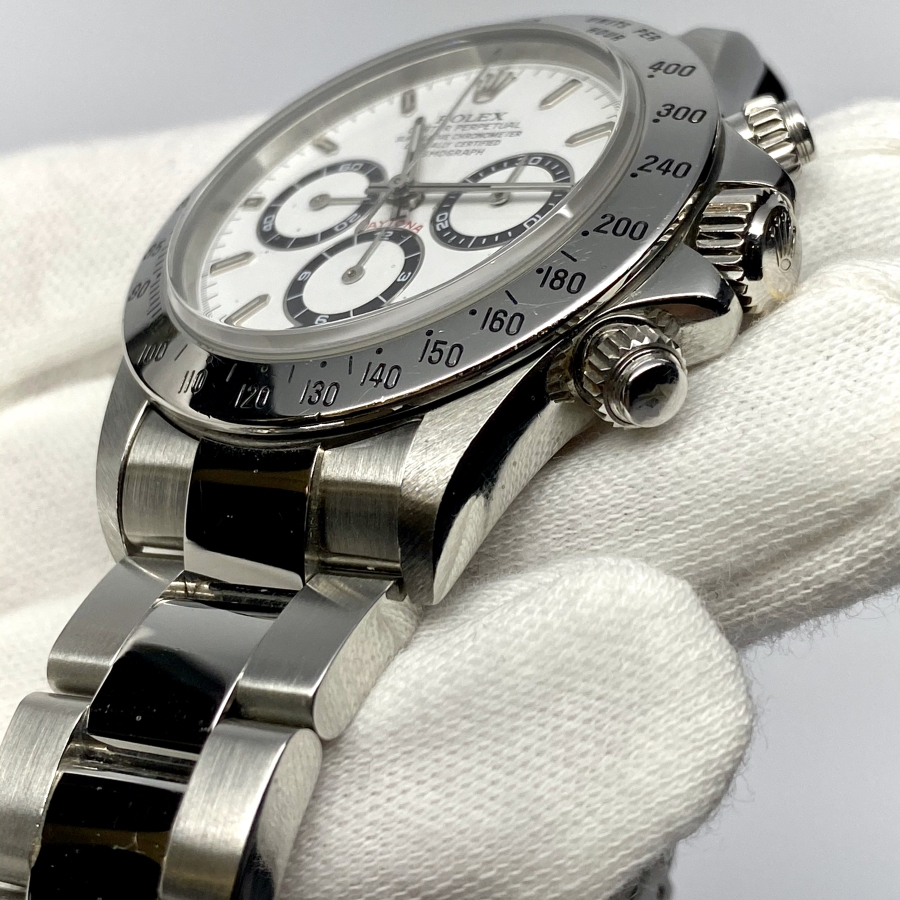
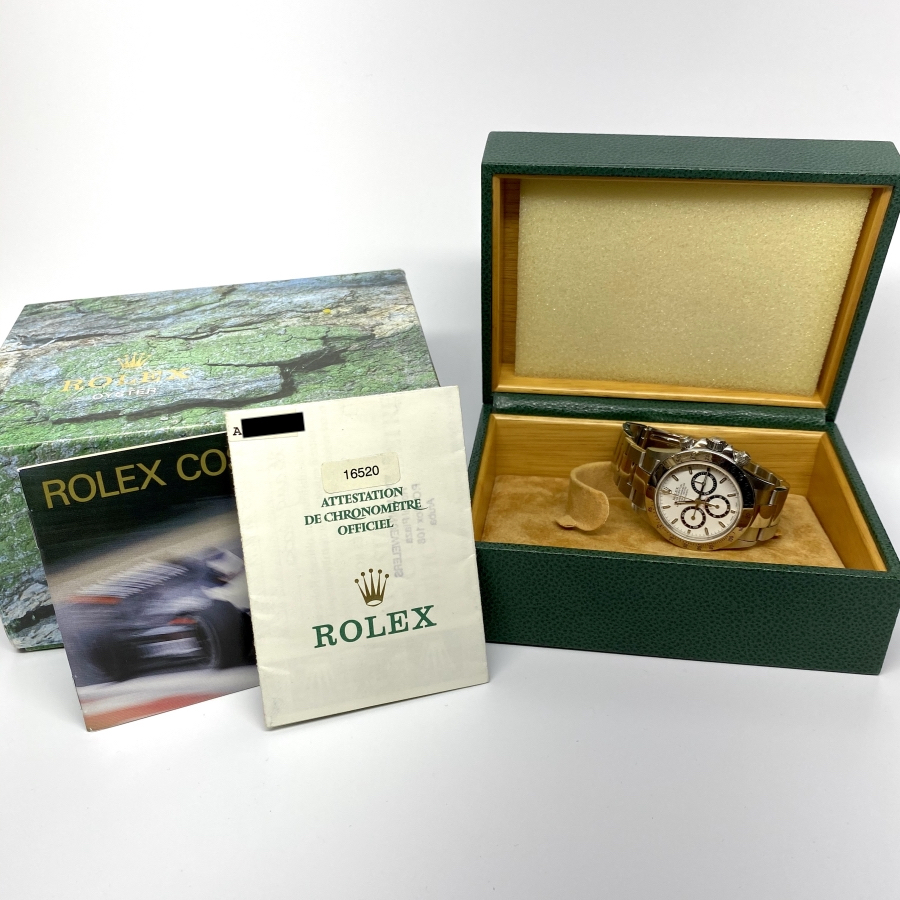
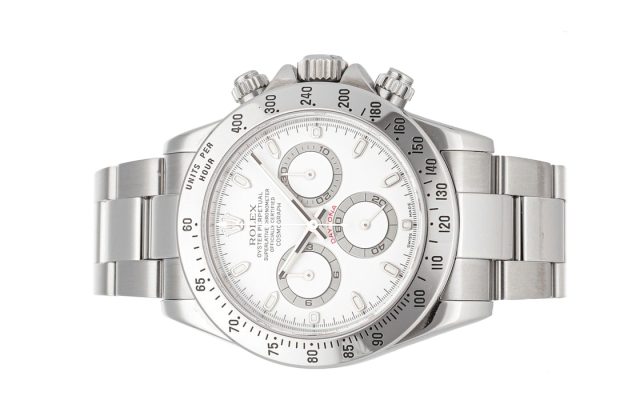
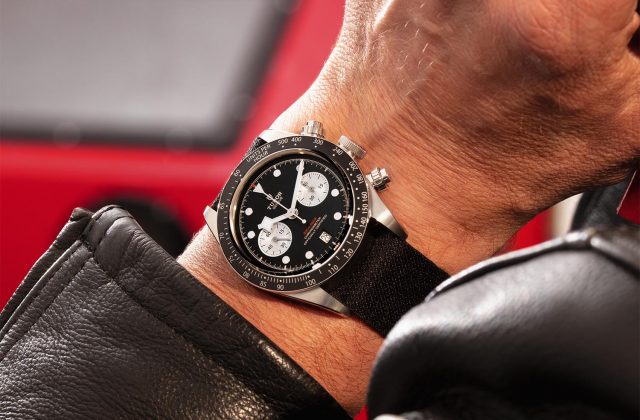
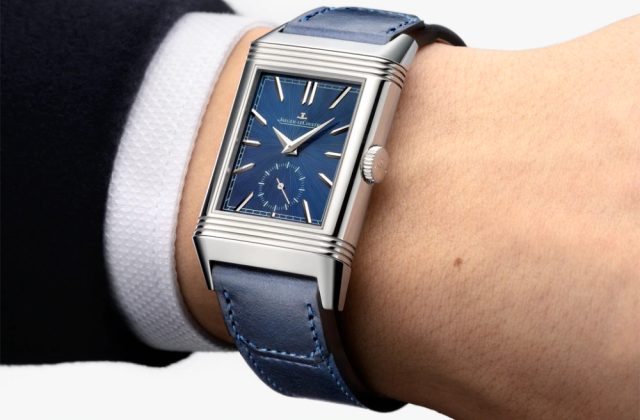
I used to be a bit (very small bit) of a watch ‘aficionado’ with one Patek Philipe, Two Baume and Mercier’s and one Rolex. I have sold all but the Rolex.
Anyhow, my question/advice is this: The Rolex that i have has a model #16518 LN (it is a an 18k yellow gold Oyster Perpetual Cosmograph Daytona with 18K yellow gold 24 hour bezel white dial with yellow gold markers and a brown Oysterflex bracelet…The one thing that i was told by a ‘certified’ Rolex technician was that I was fortunate enough to have a ‘Zenith’ movement in this watch…the bottom line question is What do you think this watch is worth or could be ‘reasonably’ sold for (either on the internet or to a reseller/collector?
Thanks so much for your time and advice…IT IS GREATLY APPRECIATED!
Vince
What a fool I was. I had a Zenith Daytona that I never wore and about 6 years ago sold it for $7100.
I am looking at a 16523 with an inverted 6 on a serti dial. However, the ’30’ at the six o’clock position is reversed, ’03’. Guessing it’s a botch job by someone. Ever see such an issue with a custom dial? Wondering if you the inverted 6 dial is ruined now? Collector value that is.
Hi David, sorry to hear that. Unfortunately, I would say yes, from a collector’s point of view if it’s an aftermarket/modified dial the value won’t be there – particularly if they’ve botched the job as you say. Pity, given that there were only so few inverted 6 dial models made.
So I was thinking about selling my 16518 yellow gold Daytona 2000 model with black straps and black MOP dial to upgrade to a Sky Dweller with an Oysterflex band. My dealer is telling I am foolish to get rid of it. Am I missing something here? Not that I need to sell it just watches would be so similar not sure I would wear the Daytona anymore.